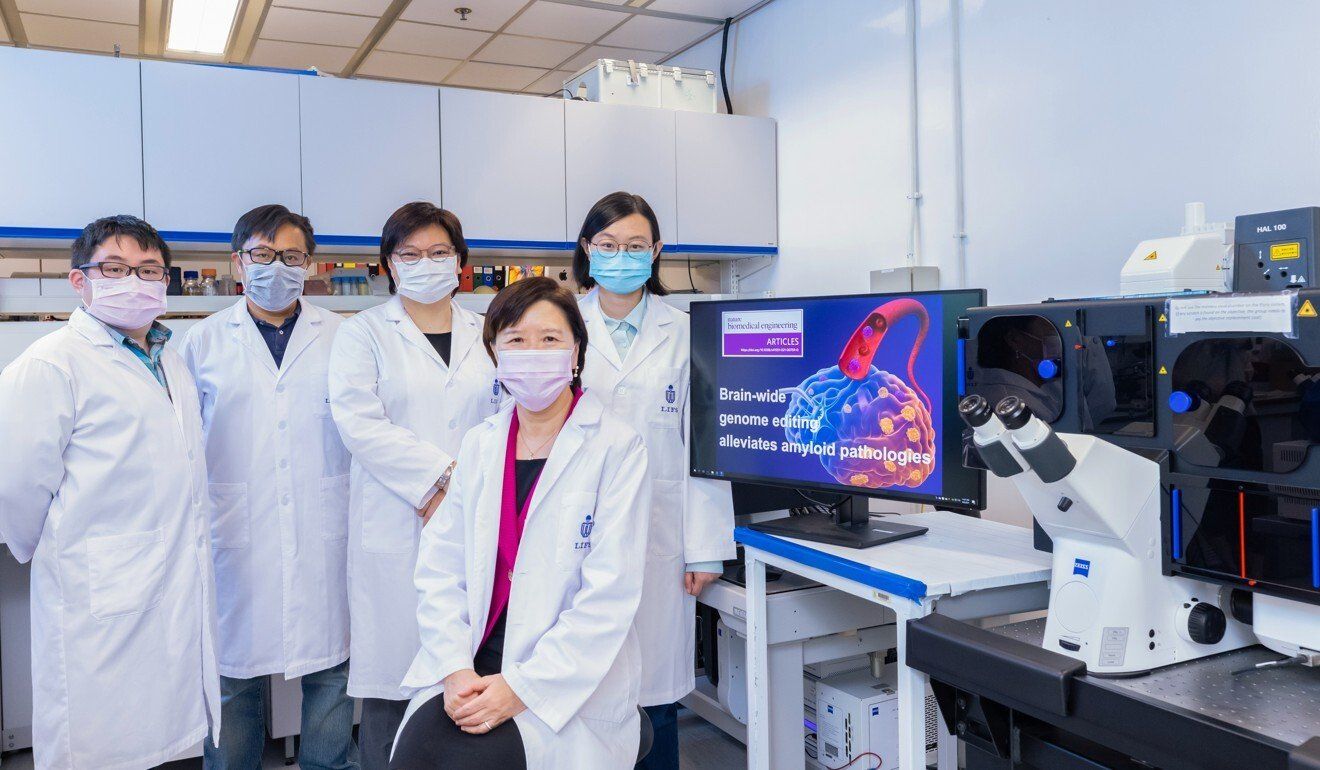Hong Kong News

Hong Kong-led team behind promising new treatment for familial Alzheimer’s
An international research team led by scientists at the Hong Kong University of Science and Technology has developed genome-editing technology that could become a “once-and-for-all” treatment for people with a family history of Alzheimer’s disease.
Led by world-renowned neuroscientist Professor Nancy Ip Yuk-yu, vice-president for research and development at the university, the group created a new system that can deliver the genome-editing tool to the entire brain of a patient rather than just a localised area as in existing approaches.
The technology is centred on being able to overcome the protective blood-brain barrier, a layer of cells that selectively prevents fluids from crossing into the central nervous system.
 HKUST Professor Nancy Ip (front) and her research team members.
HKUST Professor Nancy Ip (front) and her research team members.
“Our work actually makes it possible to have high enough efficiency, hence we were able to observe the phenotype [changes or effects]. The brain-wide aspect is also very important. A disease like Alzheimer’s doesn’t just affect a small region of the brain, so we need to have brain-wide genome editing to modify different brain regions,” Ip said.
The researchers also found that in gene experiments in which mice were made to exhibit characteristics of Alzheimer’s disease, such as impaired memory, the level of amyloid – a protein thought to drive neurodegeneration – remained low for six months post-treatment.
Research associate professor Amy Fu Kit-yu explained that the scientists wanted to demonstrate the beneficial effects of the treatment were long-lasting. “For mice, six months is a very long time. Normally experimental mice last for two years … If you apply that to humans, that is quite a long time.”
The new technology targets familial Alzheimer’s disease, which accounts for under 5 per cent of total cases. Although it has a clear genetic cause and can be diagnosed before cognitive problems occur, no effective treatment currently exists.
Ip acknowledged that while their research showed promise, it would take between five and 10 years to start clinical trials.
 The new technology developed by the HKUST-led team targets the entire brain.
The new technology developed by the HKUST-led team targets the entire brain.
But the scientists said the technology had potential to provide a “once-and-for-all” treatment by correcting disease-causing genetic mutations before symptoms appear.
Ip described the work as “an important milestone” for the use of genome editing in treating hereditary brain conditions, such as Parkinson’s disease and Amyotrophic lateral sclerosis (ALS).
“With this proof of concept, other research labs can attempt to tackle different hereditary diseases to see if this brain-wide genome editing technology can also be applicable,” she told the Post.
“If we know exactly which gene mutation will result in the defects that lead to a neurodegenerative disease, we can apply the same principle. It’s just working on a different gene.”
The work was conducted in collaboration with researchers at the California Institute of Technology and the Shenzhen Institute of Advanced Technology of the Chinese Academy of Sciences.
The results were published in the journal Nature Biomedical Engineering last month.
Alzheimer’s disease is the most common cause of dementia.
Dementia is a brain disease resulting in deterioration not only in patients’ memory, judgment and the ability to perform daily activities, but also their emotions and behaviour. Early signs, such as recent memory loss, difficulty in completing familiar tasks, misplacing things, are easily overlooked due to the gradual onset.
The disease affects more than 50 million people worldwide, and there are nearly 10 million new cases every year, according to the World Health Organization.











